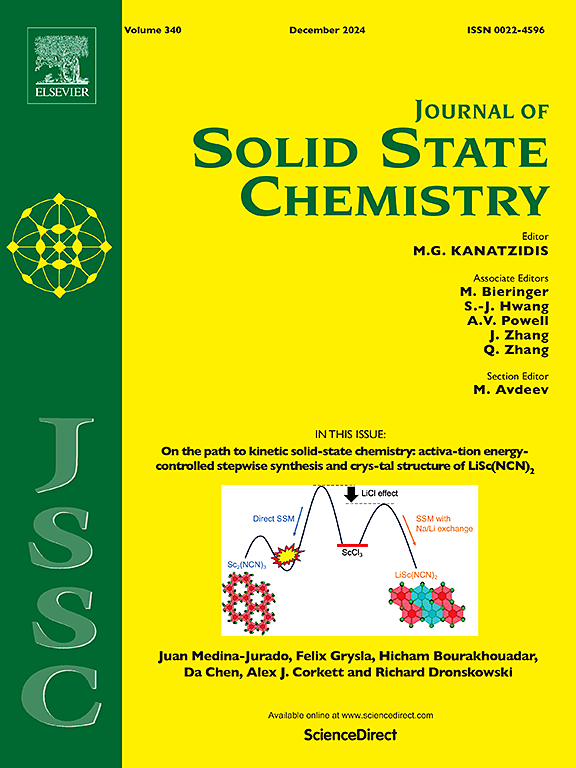Deciphering the commensurately modulated monoclinic phase of Rb2ZnCl4 at low temperatures
IF 3.2
3区 化学
Q2 CHEMISTRY, INORGANIC & NUCLEAR
引用次数: 0
Abstract
The ferroelectric phase III of RbZnCl is stable below = 192 K. It is known to be a threefold superstructure of the centrosymmetric high-temperature structure, with space group . Below = 70 K, phase IV exists as a sixfold superstructure. We report the crystal structure of phase IV with monoclinic symmetry (b unique), while a structure model with symmetry (c unique) leads to an almost equally good, yet significantly worse fit to the diffraction data. Employing the superspace approach to these commensurately modulated structures results in modulation waves that follow the two-dimensional irreducible representation of , albeit with different order parameter directions defining and symmetries, consistent with the literature. Standard tools of crystal-chemical analysis indicate that the sixfold superstructure is more stable than the threefold superstructure of phase III. However, crystal-chemical arguments cannot distinguish between the correct superstructure model with space group ( unique) and the incorrect superstructure model with symmetry ( unique) for phase IV. New crystal chemical tools are required, in order to attain a meaningful understanding of superstructure formation.

求助全文
约1分钟内获得全文
求助全文
来源期刊

Journal of Solid State Chemistry
化学-无机化学与核化学
CiteScore
6.00
自引率
9.10%
发文量
848
审稿时长
25 days
期刊介绍:
Covering major developments in the field of solid state chemistry and related areas such as ceramics and amorphous materials, the Journal of Solid State Chemistry features studies of chemical, structural, thermodynamic, electronic, magnetic, and optical properties and processes in solids.
 求助内容:
求助内容: 应助结果提醒方式:
应助结果提醒方式:


